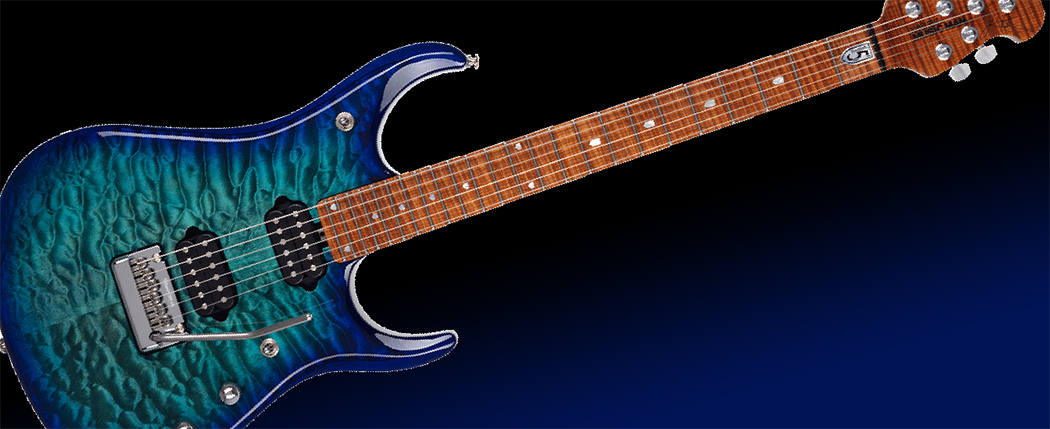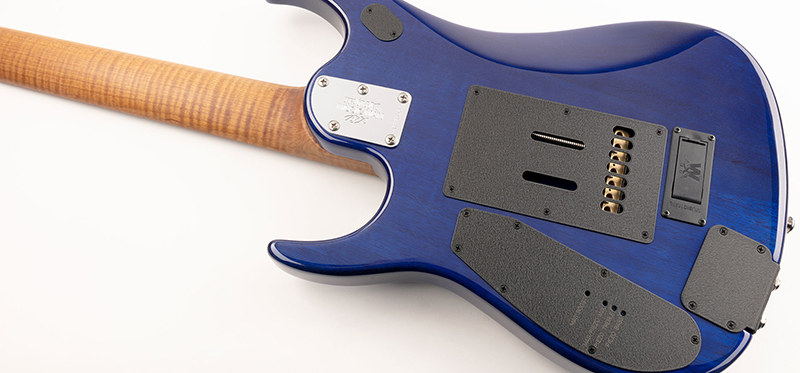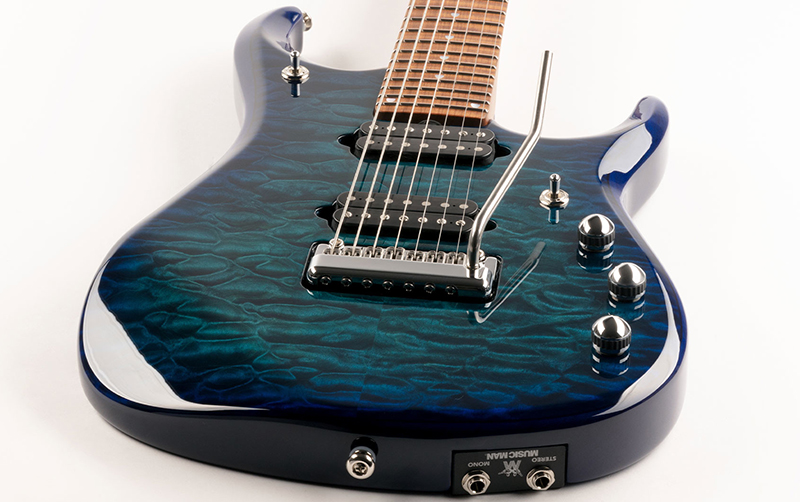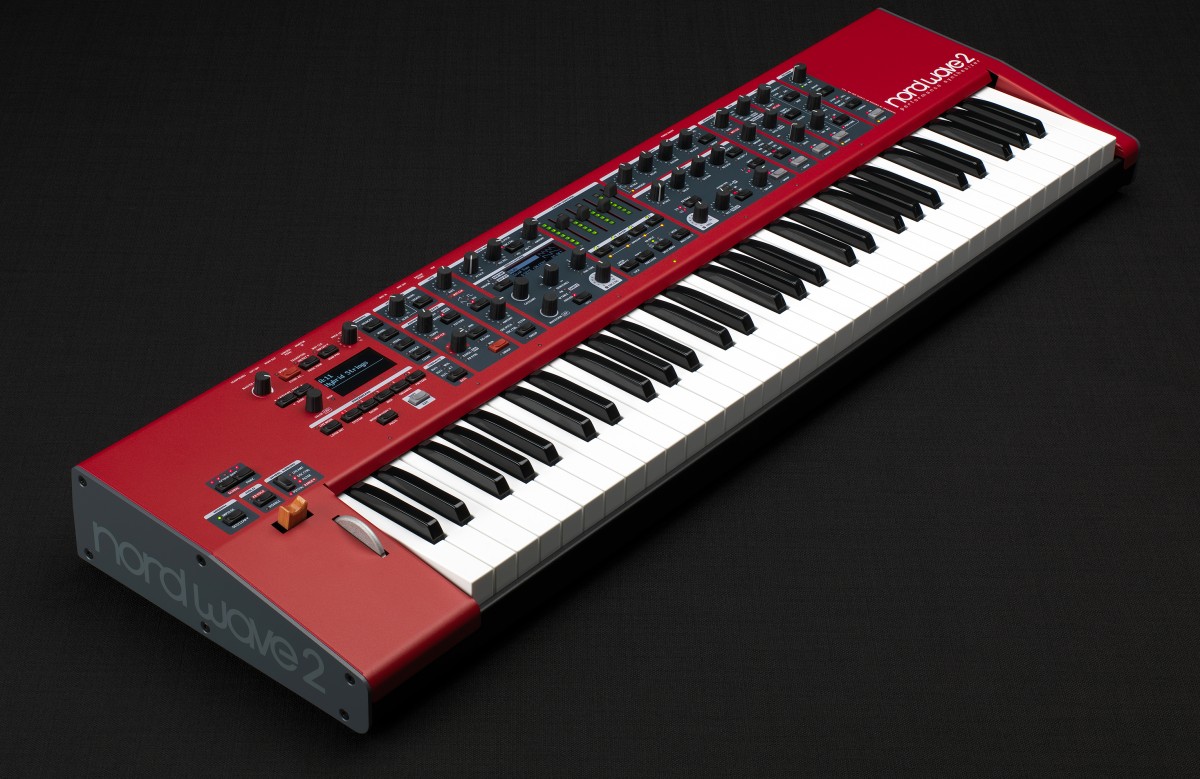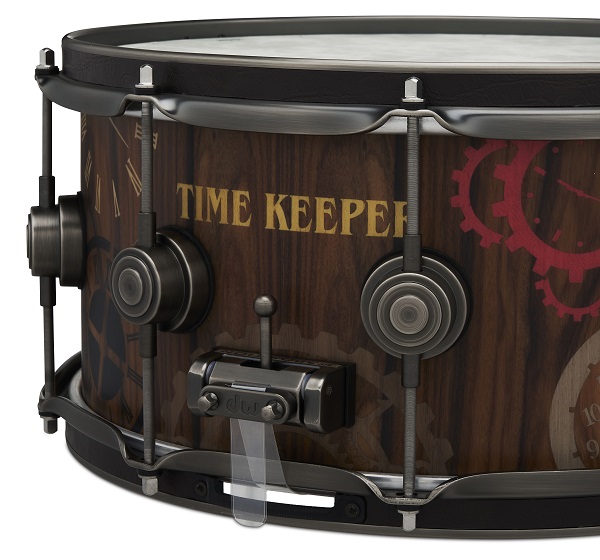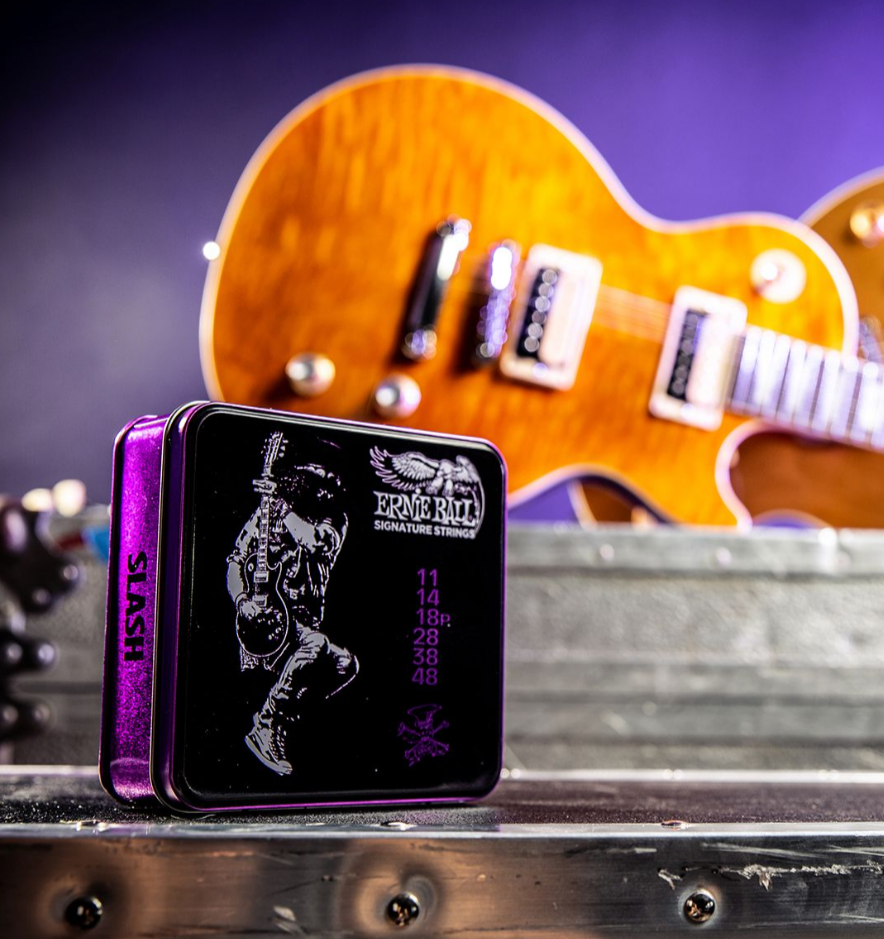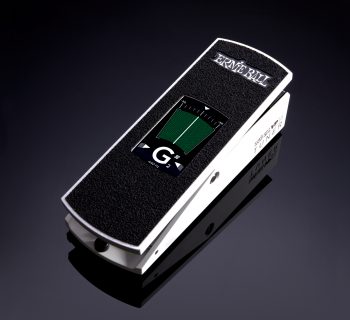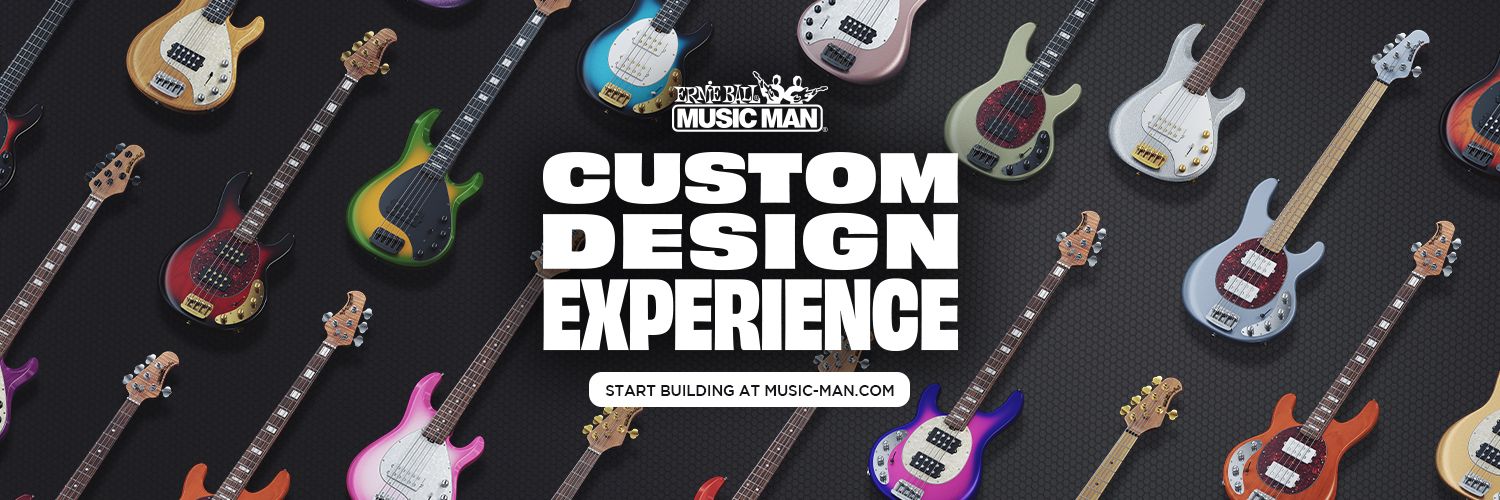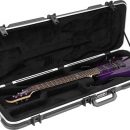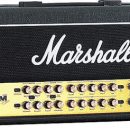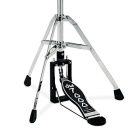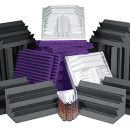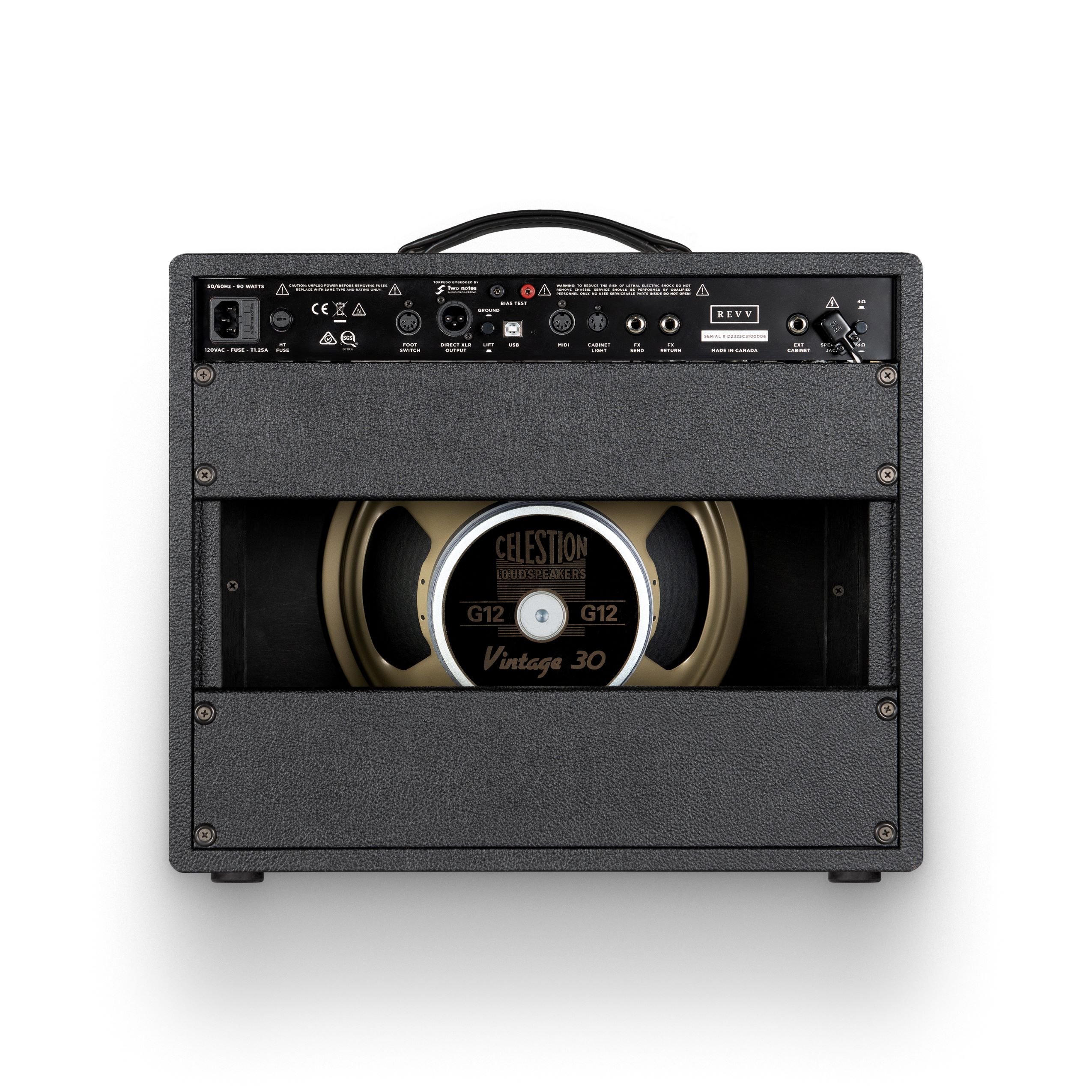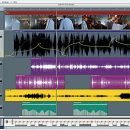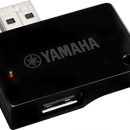 Guitarist John Petrucci needs no introduction, and it is fairly common knowledge among guitarists that this virtuoso has been playing his signature line of guitars from Ernie Ball Music Man for nearly two decades.
Guitarist John Petrucci needs no introduction, and it is fairly common knowledge among guitarists that this virtuoso has been playing his signature line of guitars from Ernie Ball Music Man for nearly two decades.
It is rare that artist signature models are so revered because instruments designed first-and-foremost for their namesake artist are not designed with the masses in mind. It’s all about the feature set being right for the specific artist, with usability that makes sense for that player, and not necessarily the mainstream guitarist. If their choices happen to suit your style of play, it’s a win-win situation, but that’s not always the case with certain players and their quirky instrument requirements.
John Petrucci’s signature guitars are exceptions to the rule, as you knew we were alluding to. We’ve been reviewing and personally playing Ernie Ball Music Man JP-series guitars since the first JP6 models came off the Ernie Ball Music Man shop floor, and we own many six- and seven-string JP family models that have come along over the years.
Each new iteration of a JP-model has introduced changes that suit John’s evolving preferences, whether it’s a change in the tone wood, the neck profile, or the pickups. Eventually, certain models get retired in favor of John’s current crush, while a few models with differing specs remain. But despite the popularity of John’s latest Majesty line of instruments, the Ernie Ball Music Man JP15 remains a long-running stalwart in the Music Man guitar lineup for good reason: it is a superb electric guitar that is well suited to a huge range of applications from metal and progressive rock to classic rock, pop, country, and fusion. The JP15 is easily one of the finest Ernie Ball Music Man guitars ever made.
You don’t need the dexterity of this prog metal virtuoso to fall in love with the JP15, which has a dreamy neck (as with most Music Man guitars, really), tuning stability you can rely on, and the versatility of Piezo acoustic output that gives you acoustic guitar-like output at the flick of a switch. We can say with confidence that the Ernie Ball Music Man JP15 is the pinnacle of the JP guitar line, and it would make a worthy addition to any serious rock guitar player’s arsenal.
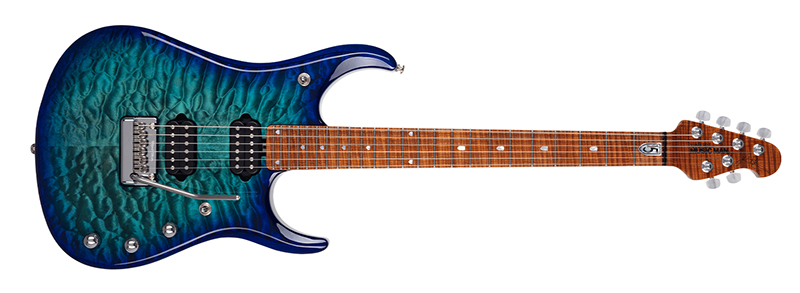 Features
Features
We tested a few of the 6-string JP-15 guitars from the 2019 lineup. New for 2020 are some different finishes, but the guitars remain the same otherwise. And at a glance, the Ernie Ball Music Man JP15 isn’t much different than all of the other JP models that came before it. The double-cutaway, solidbody design features a lightweight Okoume body with a figured maple top (and is slightly larger than the earliest models though you’d never notice this at a casual glance). Okoume has tonal properties similar to mahogany, but weighs less and is more sustainably harvested (which is why you see a lot of builders using it these days).
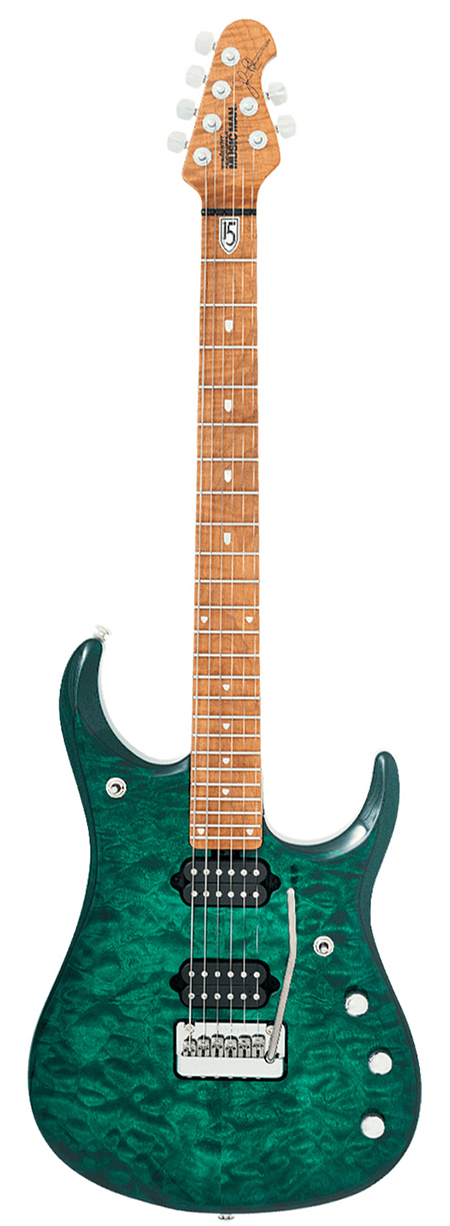 The finish options are beautiful flamed and quilted options, with some detailed piping lines that run around the face of the guitar to further set the top off from the body. The new 2020 Cerulean Blue finishes is hot, though we’re also a big fan of the classic looking Sahara Burst finish and 2019’s (green) Teal Burst.
The finish options are beautiful flamed and quilted options, with some detailed piping lines that run around the face of the guitar to further set the top off from the body. The new 2020 Cerulean Blue finishes is hot, though we’re also a big fan of the classic looking Sahara Burst finish and 2019’s (green) Teal Burst.
The 25.5” scale length neck is a gorgeous roasted maple affair, with the current models featuring a matching roasted maple fretboard and John’s signature custom inlays. The neck finish is a combination of tru-oil and gunstock wax.
Less shred-minded players found the classic JP6 neck to be a bit too thin and narrow for their taste, but the JP15 has a more comfortable and familiar-feeling neck width (1-11/16” at nut, 2-1/4” at body) and a 17” radius, which sounds particularly flat when compared to a typical Strat-type of guitar, but it is actually quite a joy to play (more on that later), and is more relaxed than the 20” radius found on the JPXI and JP12. There are 24 stainless steel, medium jumbo, frets.
The JP15 features Schaller M6-IND locking tuners, which work in beautiful harmony with the custom John Petrucci Music Man bridge. The floating bridge has stainless steel saddles and Piezo acoustic elements under each string.
The electronics are simple at first glance, but richly evolved upon closer inspection. The JP15 features a pair of John’s current signature DiMarzio pickups—Illuminators in this case. They are direct mounted to the body and are not height adjustable. A three-way toggle selects pickup combinations, and a coil split feature is embedded within the push-push mechanism of the tone control (500k) to split the humbuckers when in the middle position.
The active electronics (one 9V battery installs easily in the rear) also feature another hidden gem: a 20dB gain boost under the volume knob’s push-push setup. The DiMarzio pickups themselves are passive, and the battery powers the gain boost as well as the Piezo acoustic output.
A three-position switch on the upper bout of the guitar selects between (from up to down) Piezo acoustic output, Piezo plus Illuminators, and Illuminators only). There are a pair of outputs on the side of the guitar: one for the magnetic pickup output to your guitar amp and one for the Piezo acoustic output, which is typically run into a DI box and then into a PA system or acoustic guitar amplifier.
Have no fear if you lack those advanced signal output options. With just a single instrument cable plugged into your amp, JP guitars send both the magnetic and Piezo pickup outputs to your guitar amp (selectable again via the toggle switch on the guitar). If you want to get even more technical with us, you can alternatively use a single balanced TRS cable to send the output of the guitar to a splitter box and from there send the magnetic and Piezo pickup outputs to their respective amps. Basically, however simple or complex your signal routing needs are, the JP15 can handle it.
Usability
Playing the Ernie Ball Music Man JP15 is as sublime an experience as you’ll find with other boutique instruments, and it’s easily our favorite guitar in the Petrucci signature lineup. The JP15 is extremely comfortable to play, and the neck is silky smooth thanks to the natural feel of the oil and wax treatment. Non-shredders should not take any exception to the seemingly flat fretboard radius (based on the specs), as string bends are just as comfortable to execute as ever.
The custom Ernie Ball Music Man Petrucci bridge is fantastic. The tremolo arm pops in and can be set to hold in place or swing loosely via a tiny set screw in the bridge, and the floating bridge can be used for everything from shimmering clean vibrato to high-gain, flutter-trem effects as heard by players like John Petrucci, Joe Satriani, Steve Vai, and others. Tuning stability is notably excellent, and it always makes us question why we still buy guitars with complex, double-locking tremolo systems.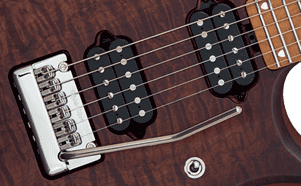
Operationally, Petrucci signature guitars deliver just the right blend of easy access without overt complexity. Some players like to have fifty different tonal options at their disposal. We don’t, and obviously neither does John Petrucci. Playing just the electric guitar side of things, life is simple. Bridge pickup, blended, or neck. The one place where we don’t share Petrucci’s preference is in the middle pickup position. We forget at which point in the product family he changed things up (maybe around the time of the JPX), but by default, the middle pickup position is both humbuckers in full. We prefer the default to be split coils (like on Petrucci’s earlier guitars), so that the middle position responds in a more Strat-like manner with just the inside poles from each pickup (and a quieter volume). Fortunately, this is one of the simplest wiring changes to make by anyone skilled in pickup wiring and soldering: just reverse the correct set of wires attached to the tone pot and you’re set.
Ernie Ball Music Man is not the only company to build premium guitars with Piezo acoustic output, but John Petrucci’s signature guitars feature the most logical implementation of any builder we have encountered. By moving the pickup selector switch away from the tone controls to the upper bout, you can switch between magnetic, acoustic, or blended tones in the span of an eighth note. Picture strumming an acoustic guitar passage during the verse of a song and then instantly switching over to your high-gain rock sound for the chorus and you get a picture of the versatility.
We pay attention to the tiniest of details and were thrilled to see that the side panel has been slightly updated: the two output jacks are clearly labeled in white, whereas older models just had the jack labels etched into the black metal, extremely challenging to see.
Sound
We’re sure players have wondered... why so many JP model guitars? Well, just like fine wine, small differences in the ingredients can add up to big change in flavor—in this case, tonal flavor. Having played a number of the various JP models through the years, there are subtle differences in sound from guitar to guitar—as noted in previous reviews of ours, though not huge differences, and barely enough to warrant adjustments to our amp settings. Of course, you can just go back through the Dream Theater catalog and listen to John’s evolving tone, which has always featured Mesa/Boogie Mark-series amps behind these guitars.
If there was ever a guitar built with the ability to handle multiple tonal landscapes, the Ernie Ball Music Man JP15 certainly wears that crown well. The tonal variety is outstanding when you take into account dual humbuckers, ability to split the coils, independent or blend of acoustic and electric guitar sounds, and a built-in boost circuit.
Our current arsenal of Ernie Ball Music Man JP guitars includes the JPXI, JPX-7, original JP6, and two JP15s (we’ve owned and/or reviewed others as well). The most noticeable difference with the JP15 from the previous models is that it has a distinctly warmer sound in comparison to its predecessors. This was more prevalent in clean settings and especially in the neck pickup position. Rolling off the tone knob really crossed into a nice, warm, almost jazzy sound. But there’s a whole lot more...
 |
JP-15 demo by Bruce Sokolovic. Recorded through UA Apollo x8 interface into Studio One Pro using Line 6 Helix Native. |
| Mesa Amp Presets Download this preset (click the words above) for your Helix hardware or software and directly compare the sound of this guitar with your other instruments! Bruce created patches that most closely matched his real Mesa/Boogie Mark V and JP-2C amps. |
For the purpose of this review, we played the Music Man JP15 through a Bogner Ecstasy 20th Anniversary amp, Fuchs ODS-II combo, Hughes & Kettner Grandmeister 40, and Mesa/Boogie JP-2C to see how the guitar sounded in a variety of settings ranging from high-gain metal to a subtle bluesy edge, finishing with a pure clean tone.
Only because we get juiced by screaming, saturated, overdrive tones, we started out in the Red channel of the Bogner Ecstasy. There was no shortage of long, sustaining shred leads with everlasting harmonic overtones in the bridge position. And as far as digging in those fat bottom chugs and heavy power chords, this guitar is definitely a heavyweight champ on the block sure to deliver all the rock/metal vibes one could dream of.
Switching to the Blue channel, the JP15 cleaned up nicely for those straight ahead AOR tones. The sound and clarity is very well defined: crisp, clear, and again full of harmonic overtones to cleanse your soul. Much like the JPXI, the tone is thick, yet creamy, warm, and round. No sign of any shrill or brittleness. Switching back to lead lines in the neck position provided a very soulful, long sustaining, singing tone, again very round and warm sounding, only deeper. From a balance standpoint, the sound remained even and smooth from the treble side of the neck to the bass side and low to high registers alike. And just like other Petrucci guitars, note definition remains clear even when playing complex chord voicings through high gain, assuming you’ve got an appropriate amplifier. This tonal detail is essential for progressive rock aficionados who live life far beyond the barre chord.
For a change of landscape and taking a drive through bluesy and clean settings, we plugged into the Fuchs ODS-II. From a tonal perspective, there is no hiding with this amp. You hear every nuance of the guitar. Starting out in the clean channel setting of the amp and in the bridge pickup position, the sound is obviously on the treble side of the spectrum, but not overly bright or brittle. Each note is very well defined with an articulate chime with each string pluck. Playing chords reaffirmed the point of having a warm tone with a bloom of every note. The JP15 was very well balanced and complimentary of itself overall. Setting the drive a little higher on the amp let us hit some of the bluesy tones of the guitar as well. The sound remains very even and smooth while retaining that slightly warm, round sound for both chord and lead riffs. You can still here each individual note within each chord.
Changing to the middle position activating both neck and bridge pickup is very similar to the sound of a Les Paul, albeit slightly brighter, but still as round and warm. The bonus of the center position on the JP15 is that you can activate the push button on the tone control which splits the coils on both pickups leaving only the two inside poles active. This yields a tone very similar to the second position on a Strat. Much like going from humbuckers to single coils, you still get the slight decibel drop in volume, but you can still hear the glorious quack and mid-range sound of a Stratocaster that is omnipresent on thousands of rock and pop records.
In the neck humbucker position, the sound was again reminiscent of a Les Paul, but with better clarity and bloom. Rolling off the Tone control really mellowed out the sound and got dark enough to comp some jazz standards without getting muddy. Of course, add some overdrive and hit those high riffs for that classic Santana sound.
In all positions of the humbucker settings, the JP15 has a built-in boost circuit under the push-push volume knob which increase the output by 20db. This is an excellent feature that really increased the amount of gain pushing the front end of the amp, and something we never really appreciated before. Some of us even thought it might be a bit gimmicky at first, but came away massive fans.
The amount of overdrive when activating the boost differs depending on the starting point of the preamp setting on the amp. Hotter initial setting on the amp equals higher input gain when activating the 20db boost. You’ll need to play with it a bit to get the right setting for your taste. When in a lead setting, activating the boost can send your tone into a blurry mess if you’re not careful. But played through clean settings on our Grandmeister, we were transported into incredible classic rock mid-gain tone instantly. And starting with a crunch channel tone, this transformed the sound into a glorious lead without having to change channels on our amp, which could prove extremely useful when you’re out of range of your footswitch on stage.
Possibly saving the best for last—and a definite crowd pleaser for us, activating the Piezo pickup is very enlightening and inspiring. The Ernie Ball Music Man JP guitars provide among the best simulated acoustic guitar sounds we’ve experienced. The sound remains woodsy, piano string like, and articulates just as a real acoustic guitar would. Playing this pickup through your electric amplifier does the job in a pinch, but if you really want to hear what the JP15 can do, use the dual outputs on the guitar and split the signal. For years we’ve been sending the Piezo signal into an L.R. Baggs Para-Acoustic DI and then into a P.A. system, or alternately into a nice Fender acoustic guitar amp.
You’ll be amazed at how convincingly you can dial in this guitar to sound exactly like an acoustic guitar. To blow your mind even more, use the blend position on the guitar to mix both electric and Piezo acoustic sounds at the same time. The sound will take you to a whole new plateau as you execute performances that were historically double-tracked. Think of some classic Zeppelin tunes where Jimmy Page double-tracked an acoustic guitar rhythm over his electric guitar rhythms, as you can execute that kind of stuff live. And if you like to play sounds with a lot of spacey effects, blending in a little bit of the Piezo (it has a separate volume control) can bring note definition to sounds that are otherwise just a bit too washed out. Likewise, if you’re playing with massive amounts of distortion, just a hint of the Piezo output blended from a separate amp/PA can bring back the note definition you’re otherwise missing.
Documentation and Product Support
Music Man provides details on the various controls and wiring with the guitar, but limited care instructions. However, the online FAQ document (see here) is full of extensive product care information.
Music Man guitars include a one-year warranty, or fifteen months when registered before your purchase year is up.
Price
The standard Music Man JP15 six-string sells for $3,249 with a flamed top and $3,449 with a quilt top. It includes a rugged, injection-molded, custom case in which Music Man have included essential details: you can leave the tremolo arm installed in the guitar when placed inside the JP case (this has always been the case with JP guitars, and we applaud Music Man for it).
This is a good price for a premium electric guitar that has such a fantastic feature set, extremely versatile tone options, and plays like a dream. 7-string options are also available, and periodically, Music Man releases limited edition BFR (Ball Family Reserve) variants of the guitar with alternate finishes and wood options.
Contact Information
Ernie Ball Music Man
www.music-man.com

